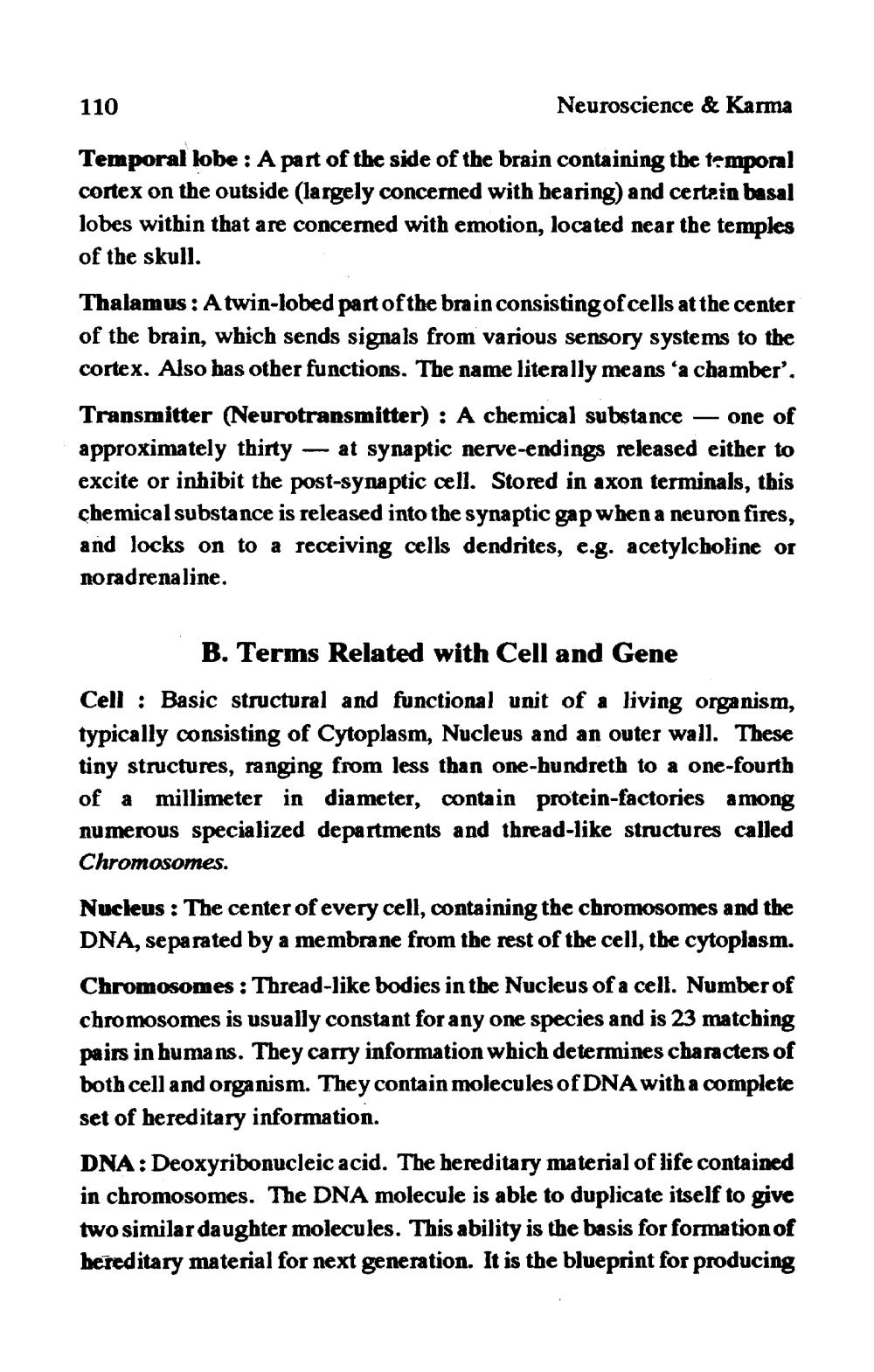________________
110
Neuroscience & Karma
Temporal lobe : A part of the side of the brain containing the temporal cortex on the outside (largely concerned with hearing) and certain basal lobes within that are concerned with emotion, located near the temples of the skull.
Thalamus: A twin-lobed part of the brain consisting of cells at the center of the brain, which sends signals from various sensory systems to the cortex. Also has other functions. The name literally means 'a chamber'. Transmitter (Neurotransmitter) : A chemical substance — one of approximately thirty — at synaptic nerve-endings released either to excite or inhibit the post-synaptic cell. Stored in axon terminals, this chemical substance is released into the synaptic gap when a neuron fires, and locks on to a receiving cells dendrites, e.g. acetylcholine or noradrenaline.
B. Terms Related with Cell and Gene Cell : Basic structural and functional unit of a living organism, typically consisting of Cytoplasm, Nucleus and an outer wall. These tiny structures, ranging from less than one-hundreth to a one-fourth of a millimeter in diameter, contain protein-factories among numerous specialized departments and thread-like structures called Chromosomes. Nucleus : The center of every cell, containing the chromosomes and the DNA, separated by a membrane from the rest of the cell, the cytoplasm. Chromosomes : Thread-like bodies in the Nucleus of a cell. Number of chromosomes is usually constant for any one species and is 23 matching pairs in humans. They carry information which determines characters of both cell and organism. They contain molecules of DNA with a complete set of hereditary information. DNA: Deoxyribonucleic acid. The hereditary material of life contained in chromosomes. The DNA molecule is able to duplicate itself to give two similar daughter molecules. This ability is the basis for formation of bereditary material for next generation. It is the blueprint for producing




